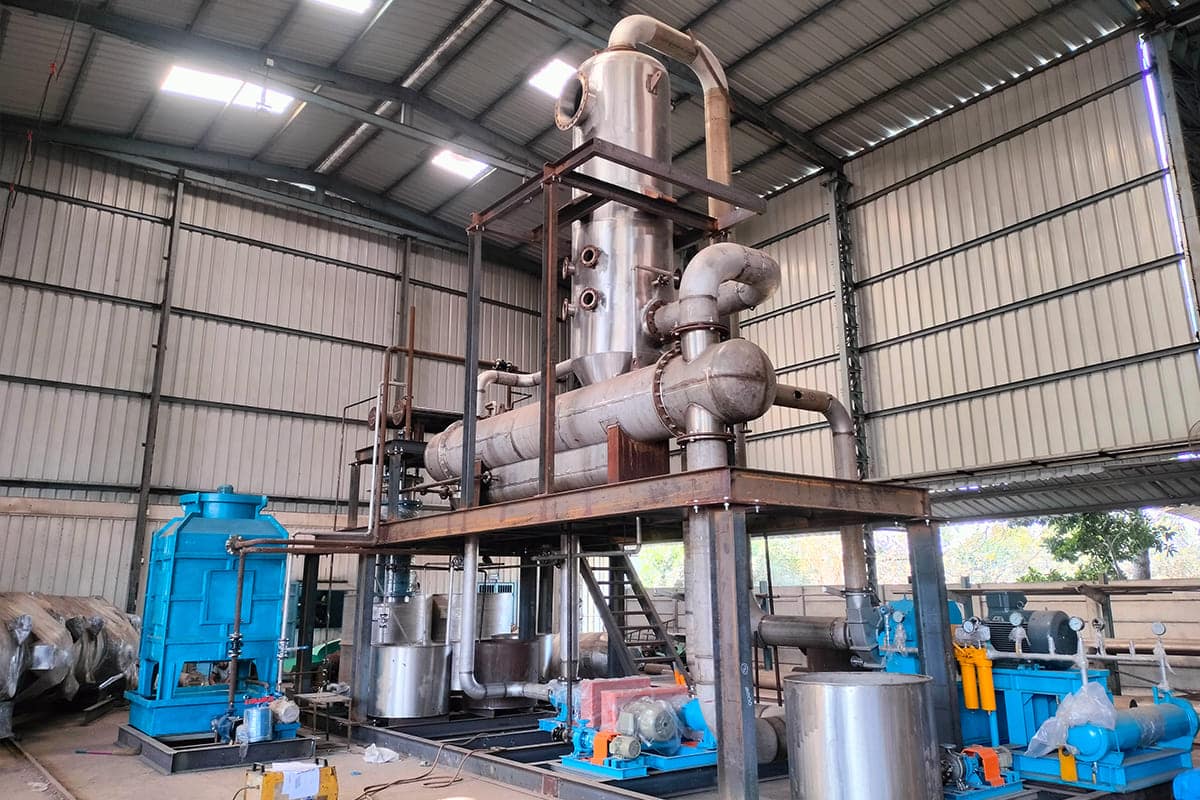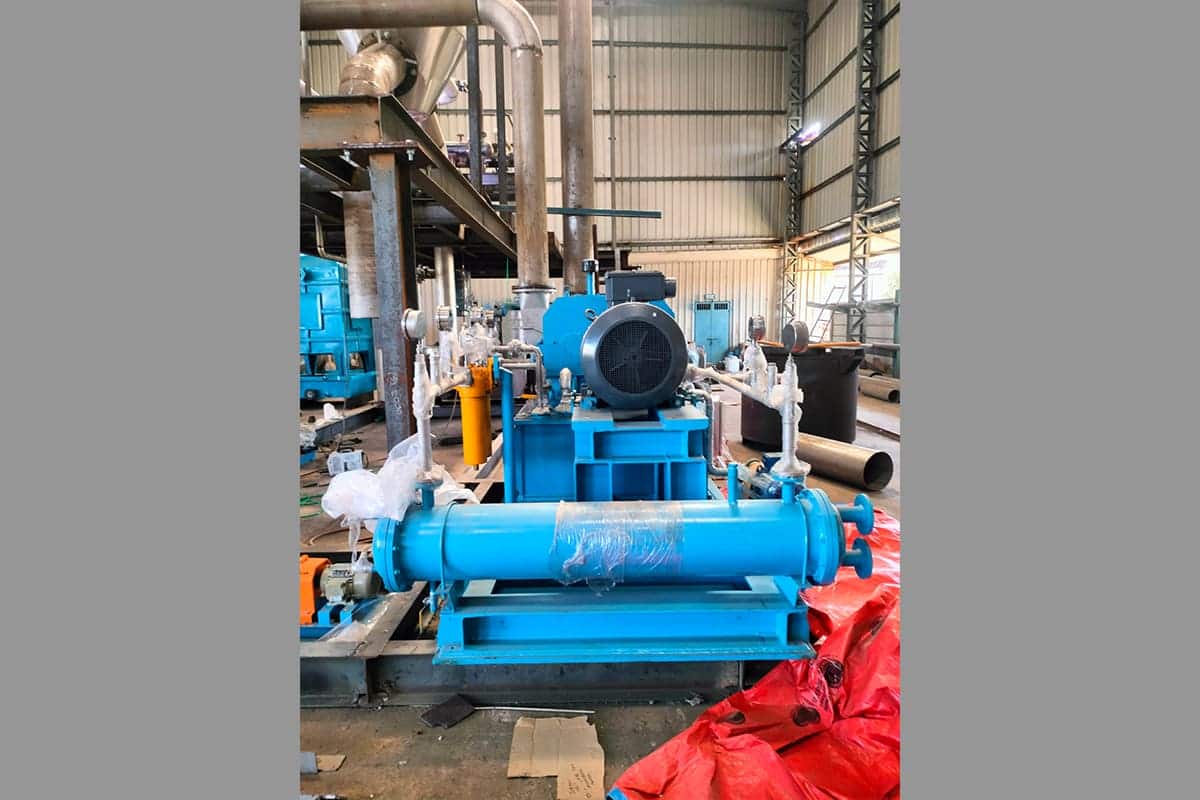Mechanical Vapour Recompressor
Mechanical vapor recompression (MVR) is an energy recovery process where energy is added to low-pressure vapor (usually water vapor) by compressing it. The result is a smaller volume of vapor at a higher temperature and pressure, which can be used to do useful work. Typically, the compressed vapor can be used to heat the mother liquor to produce the low-pressure vapor. MVR is used chiefly in industrial processes such as evaporation and distillation. Heat from the condenser, which would otherwise be lost, can be recovered and used in the evaporation process.
Vapor-compression evaporation is the evaporation method by which a blower, compressor or jet ejector is used to compress, and thus, increase the pressure of the vapor produced. Since the pressure increase of the vapor also generates an increase in the condensation temperature, the same vapor can serve as the heating medium for its “mother” liquid or solution being concentrated, from which the vapor was generated to begin with. If no compression was provided, the vapor would be at the same temperature as the boiling liquid/solution, and no heat transfer could take place.
If compression is performed by a mechanically driven compressor or blower, this evaporation process is usually referred to as MVR (mechanical vapor recompression). In case of compression performed by high pressure motive steam ejectors, the process is usually called thermocompression or steam compression.
These two compression-type evaporators have different fields of application, although they do sometimes overlap.
As a conclusion, MVR machines are used in large, energy-efficient units, while thermocompression units tend to limit their use to small units, where energy consumption is not a big issue.
Key Features & Benefits:
Complete Wastewater Recycling & Water Conservation
Ensures 100% water recovery, reducing freshwater consumption and promoting sustainability.
Advanced Multi-Stage Treatment Process
Uses Reverse Osmosis (RO), evaporators, and crystallizers to achieve zero liquid discharge efficiently.
Energy-Efficient & Cost-Effective Operation
Optimized processes lower energy consumption, minimize waste disposal costs, and improve long-term savings.
Regulatory Compliance & Environmental Protection
Meets strict environmental regulations (CPCB, EPA) while preventing water pollution and reducing carbon footprint.
Industry-Specific Customization & Smart Monitoring
Adaptable to different industries with IoT-based real-time monitoring for better control and efficiency.




